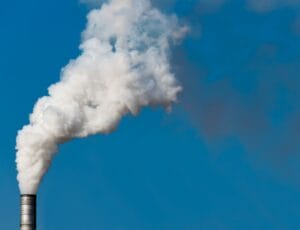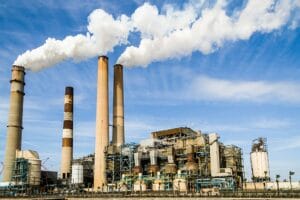In The News
Industrial Pollution Prevention: 2021 Trends and Beyond
March 30, 2021Current estimates reveal that air pollution costs the global economy $225 billion each year in lost labor income.
What’s more, the industry sector (i.e., mining, construction, and manufacturing) accounts for nearly a quarter of all greenhouse gas emissions.
With numbers like these, one thing is for sure: preventing industrial pollution is not only good for future generations but also good for the economy.
Last year, the COVID pandemic caused a halt in the market. But as normalcy begins to resume across the globe, so does the demand for industrial pollution solutions.
But what does prevention look like in 2021 and beyond?
Below, we explore some of the industrial pollution prevention trends expected to take the lead in the upcoming years.
Trend #1: A Greater Shift Towards Clean Energy
 In December of 2020, congress passed an extension on the Solar Investment Tax Credit (ITC). The ITC program offers a 30% investment tax credit to businesses that use solar energy in place of fossil fuels.
In December of 2020, congress passed an extension on the Solar Investment Tax Credit (ITC). The ITC program offers a 30% investment tax credit to businesses that use solar energy in place of fossil fuels.
This extension is a part of a growing trend of government incentives to promote clean energy usage for companies. Alongside the rise of these incentives, solar energy (and other forms of renewable energy) continue to gain popularity.
Renewable energy is the fastest-growing energy source in the U.S. and is expected to make up 45% of the world’s total electricity generation by 2040.
Industrial companies are fully aware of this impending growth and will continue to capitalize on it in 2021.
Trend #2: Increased Emphasis on Industrial Waste Management
Between 2020 and 2027, the global industrial waste management market will grow to reach a market value of over $2 billion.
The three main elements of waste management include source reduction, recycling, and waste treatment.
Source reduction works to eliminate the amount of waste a company produces, while recycling consists of optimizing raw materials and reusing sources.
Waste treatment is the final element to waste management and includes physical and chemical treatments to make industrial waste less harmful.
The benefits of implementing the tactics mentioned above include better compliance with government regulations and fewer instances of pollutants and waste creation—making waste management a valuable investment for companies to prioritize in the upcoming years.
Trend #3: A Surge in Air Pollution Control Equipment Usage
Biofilters, mist collectors, baghouses, regenerative thermal oxidizers, selective catalyst reduction, and the industrial dampers used within are all examples of air pollution control equipment used in industrial facilities.

Kelair’s industrial dampers, for example, can control how pollutants enter into a volatile organic compound (VOC) and are a critical component for regenerative thermal oxidizers (RTOs). An RTO is a type of pollution control equipment that is used to treat exhaust air.
In 2021, the global market for air pollution control equipment is slated to be $20.9 billion—a staggering 43% increase compared to 2016’s numbers.
This boom in air pollution control equipment is partially the result of an increase in emission regulations. With increasingly stringent regulations mandating lower emissions, companies will continue to look for air pollution control solutions.
Let Kelair Be Your Partner in Industrial Pollution Control
At Kelair, we design our industrial dampers to help companies improve their environmental conditions by leveraging VOC (volatile organic compound) abatement techniques. Each damper solution is designed to meet even the most stringent equipment standards for airflow, temperature, and actuation.
Don’t let your organization’s industrial pollution control standards fall behind in 2021 (and beyond). Get in touch with a Kelair Products, Inc. representative today.

